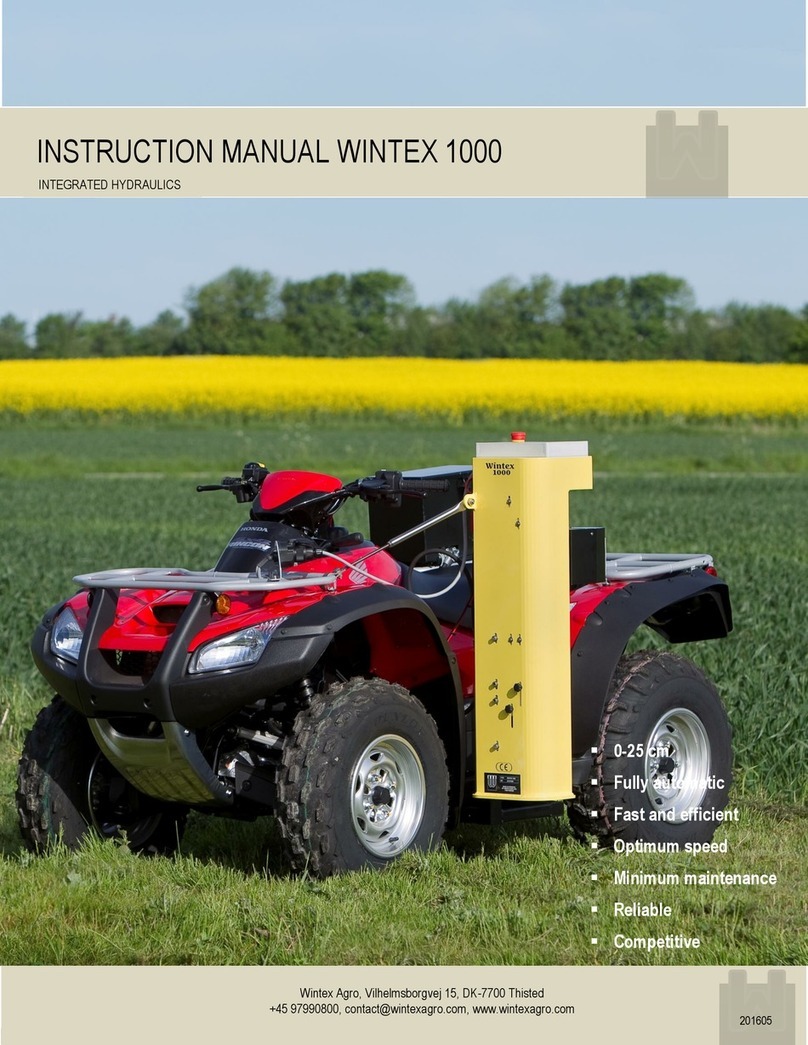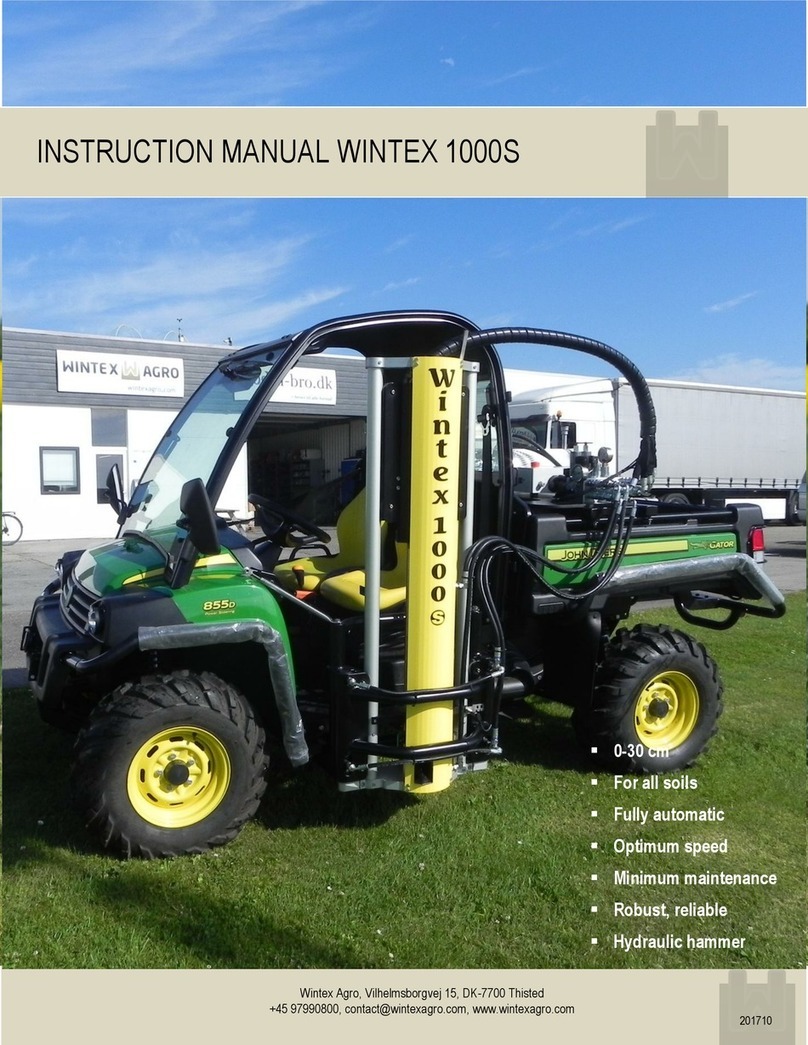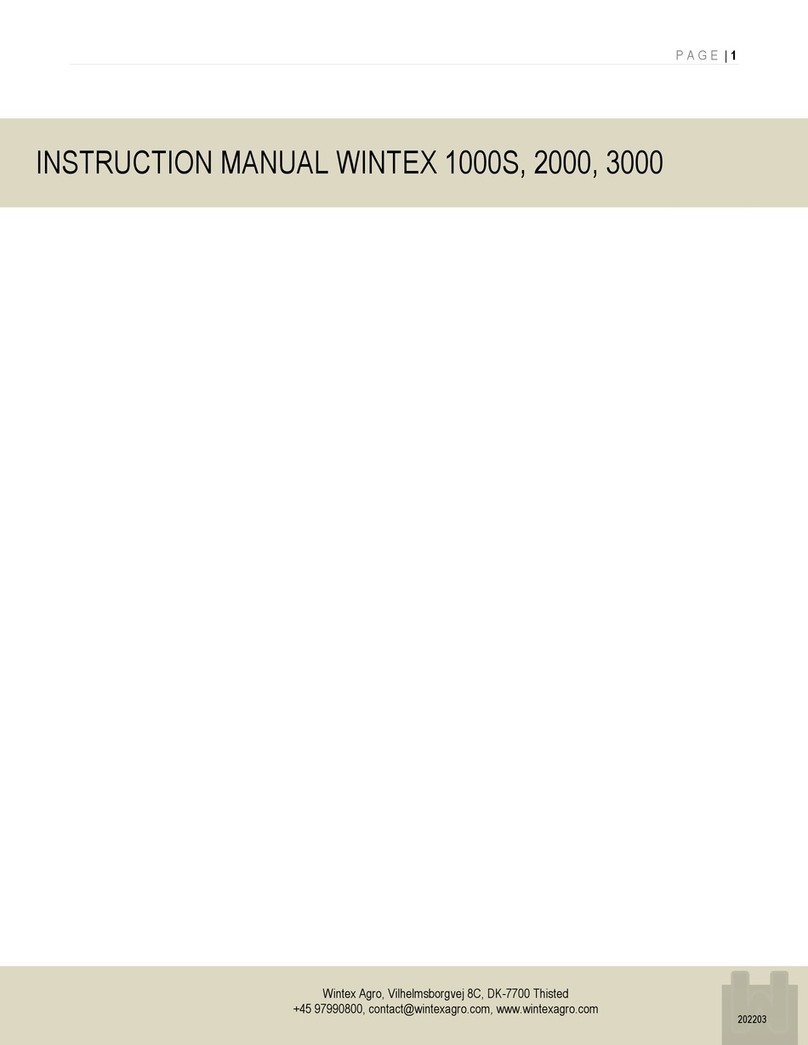
P A G E | 2
Wintex Agro, Vilhelmsborgvej 15, DK-7700 Thisted
+45 97990800, contact@wintexagro.com, www.wintexagro.com
Produced by Precision Decisions Ltd., United Kingdom
Version 2.0
Workshop Manual
WINTEX 1000
INTRODUCTION
This workshop manual covers the WINTEX 1000 soil
sampling machine. Amendments and additional
pages will be issued to ensure that the manual covers
latest models.
This workshop manual is designed to assist skilled
Technicians in the efficient repair and maintenance of
the Wintex 1000 soil sampler only, and should not be
used for any other machine.
Individuals who undertake their own repairs should
have some skill and training, and limit repairs to
components which cannot affect the safety of the
machine. Any repairs required to safety critical items
such as the emergency stop system should be carried
out by a WINTEX trained Technician.
Repairs to such items should NEVER be attempted
by untrained individuals.
REPAIRS AND REPLACEMENTS
When replacement parts are required, it is essential
that genuine WINTEX parts are used.
Attention is particularly drawn to the following points
concerning repairs and the fitting of replacement parts
and accessories: Safety features embodied in the
machine may be impaired if other than OEM parts are fitted.
Locking devices where specified, must be
fitted. If the efficiency of a locking device is impaired
during removal, it must be replaced with a new one.
It is advised that certain fasteners must not be re-used
as they may become damaged through disassembly.
PLEASE NOTE:
All numbers in ( ) are for the WINTEX 1000 with a 21 mm probe.






























